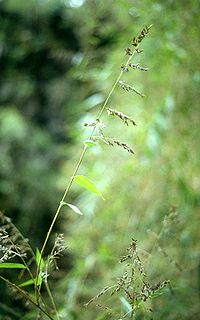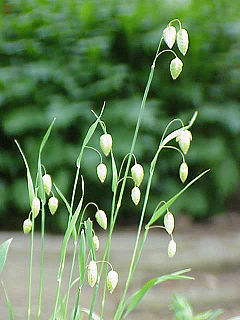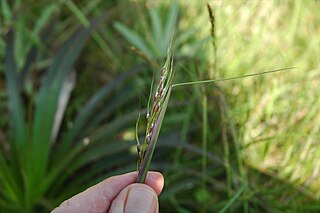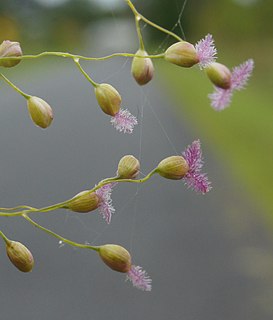
Buenos Aires, officially Autonomous City of Buenos Aires, is the capital and largest city of Argentina. The city is located on the western shore of the Río de la Plata, on South America's southeastern coast. "Buenos Aires" can be translated as "fair winds" or "good airs", but the former was the meaning intended by the founders in the 16th century, by the use of the original name "Real de Nuestra Señora Santa María del Buen Ayre", named after the Madonna of Bonaria in Sardinia, Italy.

Buenos Aires is the largest and most populous Argentine province. It takes its name from the city of Buenos Aires, the capital of the country, which used to be part of the province and the province's capital until it was federalized in 1880. Since then, in spite of bearing the same name, the province does not include Buenos Aires proper, though it does include all other parts of the Greater Buenos Aires metropolitan area. The capital of the province is the city of La Plata, founded in 1882.

Chusquea is a genus of evergreen bamboos in the grass family. Most of them are native to mountain habitats in Latin America, from Mexico to southern Chile and Argentina.

Briza is a genus of annual and perennial plants in the grass family, native to northern temperate regions of Eurasia, North Africa, and certain islands in the Atlantic.

Poa flabellata, commonly known as tussac grass or just tussac, is a tussock grass native to southern South America, the Falkland Islands, South Georgia and other islands in the South Atlantic. There are also two isolated records from the herbarium at the French Muséum national d'histoire naturelle for the Île Amsterdam in the Indian Ocean.
Postal codes in Argentina are called códigos postales. Until 1998 Argentina employed a four-digit postal code for each municipality, with the first digit representing a region in the country, except in the case of the city of Buenos Aires. The unique codes became the base for the newer system, officially called CPA.

Avena fatua is a species of grass in the oat genus. It is known as the common wild oat. This oat is native to Eurasia but it has been introduced to most of the other temperate regions of the world. It is naturalized in some areas and considered a noxious weed in others.

Eudromia is a genus of birds in the tinamou family. This genus comprises two crested members of this South American family.

Zizaniopsis is a genus of plants in the grass family, Poaceae, native to North and South America.

Piptochaetium, or speargrass, is a genus of New World plants in the grass family, native to North and South America. Piptochaetium is a bunchgrass genus in the tribe Stipeae.
Steinchisma is a genus of plants in the grass family, native to the Americas but a few of them naturalized in Africa.
Oplismenopsis is a genus of South American plants in the grass family. The only known species is Oplismenopsis najada, native to southern Brazil, Uruguay, and northeastern Argentina.

Isachne is a widespread genus of tropical and subtropical plants in the grass family, found in Asia, Africa, Australia, the Americas, and various oceanic islands. They may be known generally as bloodgrasses.
Relchela is a genus of plants in the grass family. The only known species is Relchela panicoides, native to Chile and Argentina.
Rhynchoryza is a genus of plants in the grass family. The only known species is Rhynchoryza subulata, native to Brazil, Argentina, Paraguay and Uruguay.
The Campeonato Argentino de Rugby 1962 was won by the selection of Buenos Aires that beat in the final the selection of Unión de Rugby de Rosario. For the first time the final was played outside of Buenos Aires in Rosario.
Chascolytrum is a genus of plants in the grass family, native to Latin America from Mexico to Chile.

Cattleya × elegans is a hybrid orchid in the subtribe Laeliinae. It is a pseudobulb epiphyte. Its formula hybridae is Cattleya purpurata Van den Berg (2008) × Cattleya tigrina A.Rich. (1848). It is found in South and South-East Brazil.
Elionurus elegans is a species of plants in the family Poaceae. It is found in Nigeria, Senegal and Burkina Faso. It is used as a fodder plant. Its essential oils from the aerial parts contain the terpenic compounds campherenone (43.0%), caryophyllene oxide (4.9%) and bisabolone (4.9%) whereas root essential oils contain campherenone (39.0%), epi-beta-santalene (12.0%) and caryophyllene oxide (4.6%).
Cenchrus elegans is a species of plants in the grass family. It is found in Malesia.










